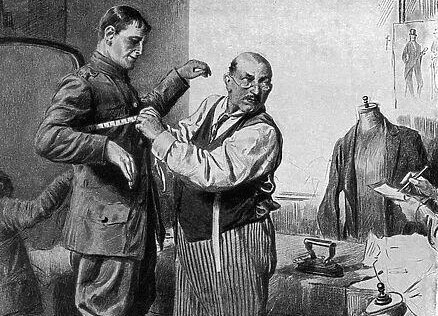Old weights and measures

Holba (lat. sextarius)
An old volumetric measure for liquids and, in the case of solids, for measuring the amount of pouring. The term comes from the German word halbe, meaning half. This hollow measure was used from the 16th century. until the introduction of the metric system in 1876. Its original value in Hungary (Slovakia) was 1 holba = 0.884 liters. Since 1848, its value has been legislated as 1 holba = 0.8333. liter = 2 quarts = 0.5 pints = 1/32 lid = 1/64 ounce (measure) = 1/128 gbel.
Jutro (lat. iuterum)
An old area measure that represented 800 - 2600 square fathoms. Since the 16th century, a jutro was considered the area of land on which a certain amount of grain was sown. A jutro represented the area that a plowman could plow in one day (from morning to evening). In the land use regulation, the area of 1 jutro was determined as 1100, 1200 and 1300 square fathoms according to the quality of the soil. The area of 1 Hungarian jutro stabilized at 1200 square fathoms (4315.9 m²) in the 19th century. Since the 18th century, in addition to the Hungarian jutro, a cadastral jutro of Austrian origin (Viennese jutro) with an area of 1600 square fathoms (5754.6 m²) was also used.
Kosec
It was an area measure that determined the area that one mower mown in one day, in 12 hours. Its area varied depending on the quality of the meadow from 28 to 43 ares (2800 – 4300 m²). However, in the 18th century, for the needs of land regulation, it stabilized and 1 mower in today's sense represented about 28.7 ares, i.e. 2870 m². From a meadow with an area of one mower, approximately one fully loaded wagon of hay could be obtained.
Lakeť (lat. brachium)
An old length measure referred to as a reef, in the range of 62 to 77 cm, e.g. the large Bratislava cubit = 0.783 m, the large Vienna cubit = 0.777 m. The Vienna cubit was mainly used in retail sales. cubit = 0.688 m. The royal cubit, the Košice cubit and the Banská Štiavnica cubit were also known.
Libra
An old measure of weight, the basis of the weight and coinage system in the Middle Ages. Usually 1 pound corresponded to approximately 514.4 g. Old Imperial units history measurements.
Merica bratislavská (metreta)
The Bratislava (Prešpor) measure was used mainly as a volume measure for grain and loose grains. After 1551, its content was rounded to 62 liters. Less well known is its use as an area measure, i.e. as the area of a field on which 1 measure of loose grains was sown. It therefore indicated the area (area of a field) on which it was possible to sow one Bratislava measure of grain, about 2150 m². In such a case, we call it a measure of arable land. However, its area varied depending on the quality of the soil from 18 to 21 ares.
Sedliacka usadlosť - In the 18th century, the entire estate consisted of 40 Bratislava merice of arable land (a total of 8 ha) and one mosca of meadows (38 a)
Siaha (lat. ulna)
It was an old measure of length. It was divided into six feet. Until the introduction of the metric system, the Vienna sieha (1.89648 m), the Bratislava (Prešpor) sieha (1.9010 m) and others were used in Slovakia. It was used mainly in determining the amount of delivered wood. After the introduction of the Theresian landowner, the square sieha was also used as an area measure (3.5966 m²).
Weight:
- Centnár, cent - 100 libier (funtov) - 56 kg
- Funt - 560 g
- Unca - 300-360 g
- Lót - 15-17,5 kg
- Merica - measure for loose materials - 54 kg
- Kila, kile - unit of weight used by the Turks - 25-30 kg
Volumetric:
- Urna (okov) - 55l
- Pinta - 1,4-1,6l
